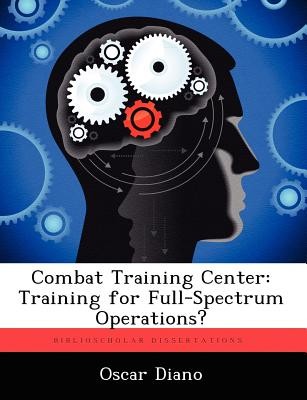
- We will send in 10–14 business days.
- Author: Oscar Diano
- Publisher: BiblioScholar
- ISBN-10: 1249364175
- ISBN-13: 9781249364177
- Format: 18.9 x 24.6 x 0.4 cm, softcover
- Language: English
- SAVE -10% with code: EXTRA
Reviews
Description
The changing strategic environment has necessitated a shift in Army training from traditional maneuver warfare to full-spectrum operations to defeat irregular, catastrophic, and disruptive challenges more effectively. The problem is that full-spectrum operations have apparently replaced traditional warfare training at the National Training Center (NTC) and Joint Multinational Readiness Center (JMRC) instead of complementing or augmenting it. Thus the central research question is: Do the training models at the JMRC and NTC, train maneuver units for certain portions of the full spectrum of military operations at the expense of other critical tasks? The study traces the source of training guidance from The National Security Strategy to The Quadrennial Defense Review Report to The Army Plan and eventually to Forces Command and United States Army Europe. It uses two examples of unit rotations (one at NTC and historical data from JMRC) to serve as sources of comparison between strategic guidance, operational direction, and tactical employment of full spectrum training. Both examples reveal a focus upon training to defeat insurgencies at the expense of traditional expertise.
EXTRA 10 % discount with code: EXTRA
The promotion ends in 17d.03:27:15
The discount code is valid when purchasing from 10 €. Discounts do not stack.
- Author: Oscar Diano
- Publisher: BiblioScholar
- ISBN-10: 1249364175
- ISBN-13: 9781249364177
- Format: 18.9 x 24.6 x 0.4 cm, softcover
- Language: English English
The changing strategic environment has necessitated a shift in Army training from traditional maneuver warfare to full-spectrum operations to defeat irregular, catastrophic, and disruptive challenges more effectively. The problem is that full-spectrum operations have apparently replaced traditional warfare training at the National Training Center (NTC) and Joint Multinational Readiness Center (JMRC) instead of complementing or augmenting it. Thus the central research question is: Do the training models at the JMRC and NTC, train maneuver units for certain portions of the full spectrum of military operations at the expense of other critical tasks? The study traces the source of training guidance from The National Security Strategy to The Quadrennial Defense Review Report to The Army Plan and eventually to Forces Command and United States Army Europe. It uses two examples of unit rotations (one at NTC and historical data from JMRC) to serve as sources of comparison between strategic guidance, operational direction, and tactical employment of full spectrum training. Both examples reveal a focus upon training to defeat insurgencies at the expense of traditional expertise.


Reviews